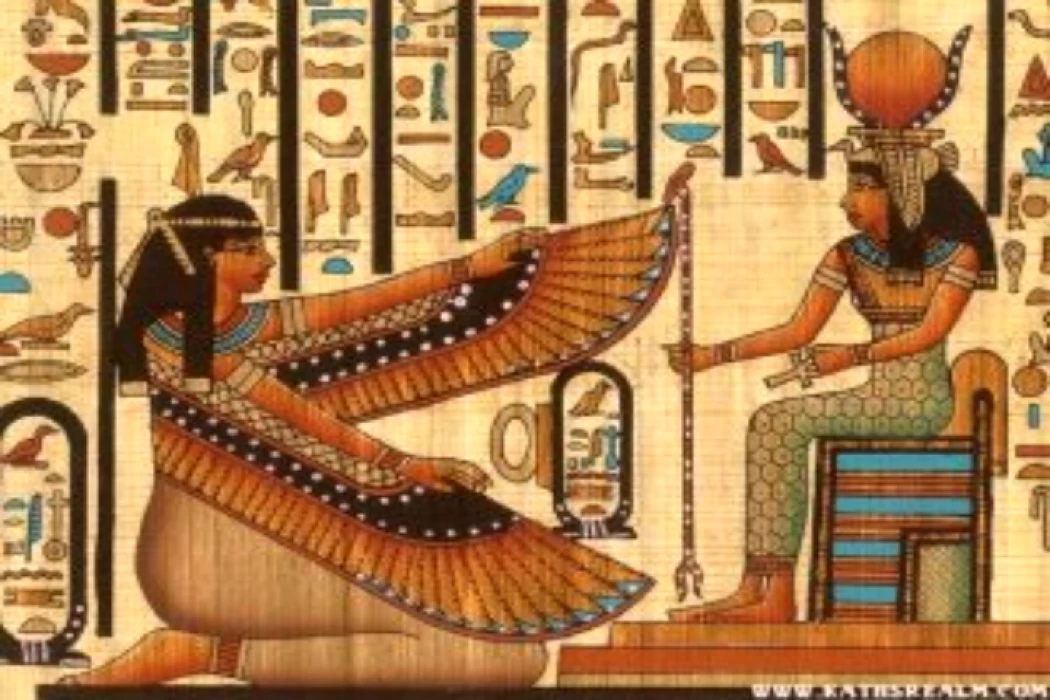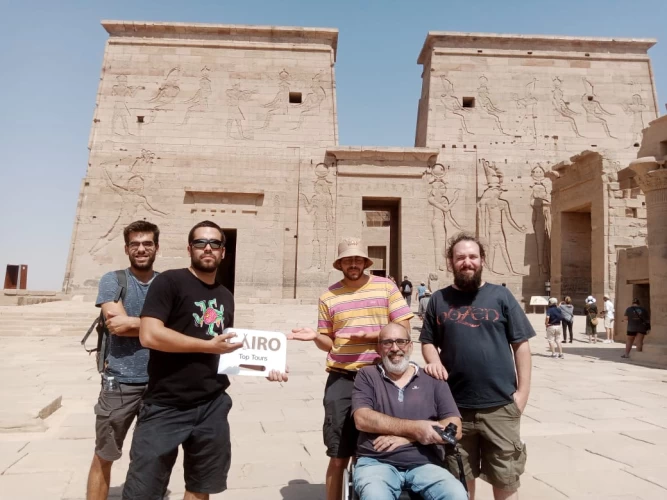
Göttin Nekhbet | Ägyptische Göttin
Göttin Nekhbet
Nekhbet wurde oft so dargestellt, dass sie ihre Flügel über dem Herrscher ausbreitet, während sie mit ihrer Klaue das Kartuschenbild oder andere Embleme festhält.
Sie erschien als Mädchen, typischerweise mit einem Geierkopf und einer weißen Krone, und wurde im Allgemeinen so dargestellt, dass sie den Herrscher säugte.
Ägyptische Göttin
Das Zentrum von Nekhbets Kult war El-Kāb, doch ihr Hauptepitheton machte sie zur Unsterblichen von Hierakonpolis (oder Nekhen), der traditionellen Stadt gegenüber von El-Kāb, in der geografischen Region des Nils.
Nekhbet war die Patronin der Verwaltungsgliederung und zeigte die Einheit der "Zwei Damen" im Namen des Herrschers (mit ihrem Gegenstück Wadjet). Sie war typischerweise als "Hedjet" (Weiße Krone) in Bezug auf die Krone der Verwaltungsteilung bekannt und erscheint häufig als heraldisches Symbol für die Verwaltungsteilung. Sie war auch eine Beschützerin der königlichen Kinder und in späteren Zeiten aller jungen Kinder und werdenden Mütter.
Es gibt Beweise dafür, dass Nekhbet bereits im prädynastischen Ägypten üblich war, jedoch speziell mit der Stadt Nekheb in Verbindung stand (ihr Name bedeutet tatsächlich "sie von Nekheb"). Mit der ersten Familiensumme wurden jedoch Nekheb und Nekhen (Kultzentrum der ägyptischen Gottheit der Ältere) vereinigt und sie oder er und Wadjet zum Namen Nebty des Pharaos kombiniert; ihre Position als Repräsentantin der Verwaltungsabteilung war absolut etabliert.
Hinweise in den Pyramidentexten (aus der fünften Dynastie) stellen sicher, dass Nekhbet als unsterbliche Schöpferin mit dem Beinamen "Vater der Väter, Mutter der Mütter, die von Anfang an existiert hat und Schöpferin dieser Welt ist" angesehen wurde. Sie war auf der Nemes-Kleidung des Königs als Geier oder Schlange und ab dem Vierten Volk als Geier-Kleidung für eine ausgezeichnete königliche Gattin abgebildet.
Entdecken Sie mehr über die Götter und Göttinnen des alten Ägypten durch Luxor Tagestouren auch wenn Sie den Zug für ein paar Stunden nach Norden können Sie auch während Assuan Tagestouren oder sogar unsere 2 Tage Tour nach Luxor von Assuan gibt es eine Menge von Ägypten Tagestouren, die nach Luxor aus den verschiedenen ägyptischen Städten wie Hurgada Tagestouren auf dem Landweg nach Luxor oder wenn Sie für einen gemütlichen Urlaub in Sharm kommen können Sie das Flugzeug für einen Tag während Sharm El Sheikh Ausflüge zu erkunden alle der historischen Stadt.
Buchen Sie jetzt für eine große Erfahrung von Ägypten Urlaub und Ägypten Urlaub Pakete Luxor Tagestouren, Assuan Tagestouren, und Ägypten Luxus-Touren zu den fabelhaften Gizeh Pyramiden Tour & die Sphinx, das Ägyptische Museum Tour, Tal der Könige, koptischen und islamischen Kairo sowie Abu Simbel Tempel, der beste Weg, um das Land zu erkunden sind Ägypten Tagestouren, Kairo Tagestouren und Kairo Tagestouren vom Flughafen zu sehen, alle die unglaublichen Wunder des alten Ägypten und erfahren Sie mehr über die ägyptische Geschichte
References within the Pyramid Texts (from the Fifth Dynasty) ensure that Nekhbet was thought-about to be a creator immortal with the epithet “Father of Fathers, Mother of Mothers, who has existed from the start, and is Creator of this World”. She was diagrammatical on the king’s Nemes clothing as a vulture or a snake and from the Fourth folk vulture clothing for an excellent royal spouse.
In ancient mythology, Nakhbet is considered a local goddess from the early pre-dynastic era. The goddess was called the patroness of the city of Nakhbet (Kaab), and she later became the patroness of Upper Egypt and was the second patroness of all of ancient Egypt when it was unified. In Egyptian religion, Nakhbet was seen by the people as the protector of all the rulers of Upper Egypt. Like a bird eagle the powerful goddess.
In ancient mythology, Nakhbet is considered a local goddess from the early pre-dynastic era. The goddess was called the patroness of the city of Nakhbet (Kaab), and she later became the patroness of Upper Egypt and was the second patroness of all of ancient Egypt when it was unified. In Egyptian religion, Nakhbet was seen by the people as the protector of all the rulers of Upper Egypt. Like a bird eagle the powerful goddess.
Nekhbet was often pictured as spreading her wings over the ruler while grasping in her claw the cartouch image or different emblems. She appeared as a girl, typically with a vulture’s head, sporting a white crown, and was generally delineated suckling the ruler. the middle of Nekhbet’s cult was El-Kāb, however, her principal epithet created her the immortal of Hierakonpolis (or Nekhen), the traditional city opposite El-Kāb, on the geographical region of the Nile River.
Nekhbet has been depicted since the beginning of the historical era in the form of a female vulture, which is still occasionally seen in Upper Egypt. She is usually depicted in profile or with wings spread in a straight pose, with only the head and feet depicted in profile. She is usually depicted holding the Sn sign in her talons, which signifies eternity or dominance. Nekhbet is identified with the goddess Wadjet, her counterpart in Lower Egypt, and thus Nekhbet is sometimes depicted as her serpent counterpart.
With Wadjet, she embodied one of the five royal titles, Nebty, meaning "the two ladies" or "belonging to the two ladies." Nekhbet also personified the crown of Upper Egypt. In human form, she may sometimes be depicted as a woman wearing a vulture-shaped headdress or crown, or she may wear the White Crown of Upper Egypt.
Nekhbet was the patron of administrative division, showing the unity of the “Two ladies” within the Nebty name of the ruler (with her counterpart Wadjet). She was typically known as “Hedjet” (White Crown) in relevance to the crown of the administrative division and frequently seems as a heraldic device representing the administrative division. She was conjointly a defender of royal kids and, in later periods, of all young kids and expectant mothers.
There is proof that Nekhbet was already standard in Predynastic Egypt however was specifically related to the city of Nekheb (her name truly means “she of Nekheb”). However, by the first family amount, Nekheb and Nekhen (cult center of Egyptian deity the Elder) had incorporated and she or he and Wadjet were combined to make the Nebty name of the pharaoh; her position as a representative of administrative division was absolutely established.
There was a huge cult cabin for Nakhbet at El Kab, although little remains of it. Since at least the Old Kingdom, Nakhbet has been characterized by the white crown of Upper Egypt, and was thus closely associated with the monarchy and the person of the king, so she was mythologically known as the "mother of the king." The pyramid texts depicted her as a mother goddess in the form of a large white cow. The pyramid texts depicted her as a matriarch in the form of a large white cow. In royal birth scenes, such as those found in the funerary temple of King Sahuros at Abu Sir, Nakhbet is represented as a nurturer or protective caretaker of the king.
There is proof that Nekhbet was already standard in Predynastic Egypt however was specifically related to the city of Nekheb (her name truly means “she of Nekheb”). However, by the first family amount, Nekheb and Nekhen (cult center of Egyptian deity the Elder) had incorporated and she or he and Wadjet were combined to make the Nebty name of the pharaoh; her position as a representative of administrative division was absolutely established.
Along with Wadjet, she embodied one of the five royal titles, Nebty, meaning "the two ladies" or "belonging to the two ladies." Nekhbet also personified the crown of Upper Egypt. In human form, she was sometimes depicted as a woman wearing a vulture-shaped headdress or crown, or she might wear the White Crown of Upper Egypt.
















